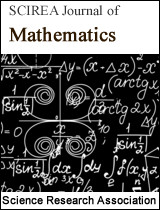Inquiry-Based Science and Mathematics Using Dynamic Modeling
DOI: 378 Downloads 15865 Views
Author(s)
Abstract
Over the past six years, I have integrated student engagement through inquiry- and project-based learning into college mathematics instructions. I attended many workshops about using computation modeling in the classroom supports student learning and reduces student anxiety. Through dynamic modeling students can connect Mathematics skills with real-world questions. At this presentation I will focus on inquiry-based learning enhanced by computational dynamic modeling with content and practice to assist audiences to incorporate modeling and simulation at all levels of students from freshman to senior. The presentation will expose audiences to the basics of computational thinking, including modeling and simulation, with special emphasis on exploring topics that complement each other in math, engineering, and physical, life, and social science.
Keywords
dynamic modeling, procedural mathematics, conceptual mathematics, project-based learning.
Cite this paper
Shinemin Lin, Domenick Thomas,
Inquiry-Based Science and Mathematics Using Dynamic Modeling
, SCIREA Journal of Mathematics.
Volume 2, Issue 2, April 2017 | PP. 28-40.
References
| [ 1 ] | Jo Boaler, “The Math-Class Paradox”, The Atlantic, Feb. 4, 2016 |
| [ 2 ] | Bob Pannof, Workshop Notes at West Virginia State University, 1-3 August 2016 |
| [ 3 ] | Zill, Wright, “Differential Equations with Boundary-valued Problems 8th Edition, 2013 pp 108- 109. |
| [ 4 ] | Jack Andenoro, “The Spread of Infectious Disease”, http://home2.fvcc.edu/~dhicketh/DiffEqns/ Spring2012Projects/M274FinalProjectJackAndenoro/RuftDraft.pdf, May 11, 2012 |

